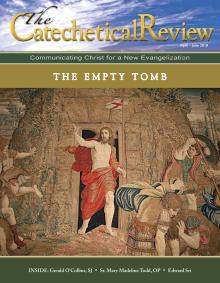It would certainly be less work to use plastic beads for sorting in Montessori school or use battery operated candles to minimize clean up. However, the artificial does not hold the same attraction for young children as the real.
In our catechetical work, whatever methods we use, we may be tempted to avoid the real because it’s messy, risky, uncomfortable, expensive, and requires more work. Our parish youth minister does an activity with teens using lighted candles to remember babies whose lives were ended by abortion. The first year, the parish maintenance staff was more than a little displeased by the extra work involved in cleaning wax from the floor. The next year our youth minister considered using battery operated candles, but his team agreed that the symbol of the living flame being snuffed out is more powerful with a real candle; so, although it took more time and effort, they devised ways to keep the candles from dripping on the floor.
Real is Beautiful
We all find the real more beautiful than the artificial. Who does not prefer the glow of candlelight to other forms of lighting? A fine linen napkin is more beautiful than the best paper product, and silk flowers are only attractive in as much as they approximate the blooms they imitate.
In remarks to artists, Pope Benedict XVI connects reality and beauty: “the experience of beauty does not remove us from reality; on the contrary, it leads to a direct encounter with the daily reality of our lives, liberating it from darkness, transfiguring it, making it radiant and beautiful.”[i] In the remainder of this article we explore some practical ways catechists can honor the orientation of the human person toward reality.
The rest of this online article is available for current Guild members.
This article is from The Catechetical Review (Online Edition ISSN 2379-6324) and may be copied for catechetical purposes only. It may not be reprinted in another published work without the permission of The Catechetical Review by contacting [email protected]


















